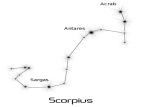
 |
private DatabaseHome | Show All | Simple Search | Advanced Search |
|
| Welcome! This database provides access to scientific literature. |
Recent Changes |
Login: |
|
|
||
| Most recently added publications: | ||
About |
||
| This literature database is maintained by the (TK). You're welcome to send any questions or suggestions to our feedback address. The database is powered by refbase, an open source database front-end for managing scientific literature & citations. |  |
|
| Home | CQL Search | Library Search | Help |